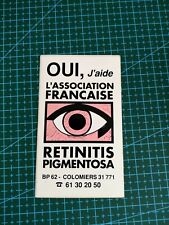
The latest issue of the journal Neuron details how scientists at the Wayne State University School of Medicine and the Pennsylvania College of Optometry have used gene-transfer technology to partially restore vision in otherwise blind mice.
The mice in the experiment had been genetically bred to lose rods and cones, the light-sensitive cells in the retina. Photoreceptive rods and cones normally respond to light and send signals through the retina and the optic nerve to the visual cortex of the brain, where images are formed. Rods and cones degenerate and die in some genetic diseases, such as retinitis pigmentosa (RP), which results in no visual signals reaching the brain.
Funded by National Eye Institute, the researchers used a green algae protein called channelrhodopsin-2 (ChR2), which they inserted into nerve cells in the retinas of the mice. These cells subsequently became light sensitive and starting sending signals through the optic nerve to the brain. The researchers said that light sensitivity was restored in most of the mice that were treated. Sensitivity persisted for at least six months but the researchers doubt whether the mice regained usable vision. However, with further technical improvements, they speculate that practical visual restoration might be possible. To this end, they hope to carry out further research to look at other microbial proteins or modified versions of ChR2.










Comments are closed.